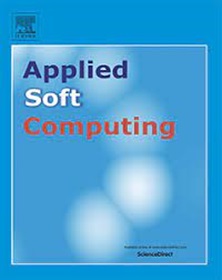A Bayesian graph structure inference neural network based on adaptive connection sampling
IF 7.2
1区 计算机科学
Q1 COMPUTER SCIENCE, ARTIFICIAL INTELLIGENCE
引用次数: 0
Abstract
Graph Neural Networks (GNNs) have drawn a lot of interest recently and excel in several areas, including node categorization, recommended systems, link prediction, etc. However, most GNNs by default observe graphs that accurately reflect the relationships between nodes. The feature aggregation of GNN is done by aggregating the neighbor nodes of the node. Therefore, observation graphs are not always compatible with the properties of GNNs. Unlike random regularization techniques that employ constant sampling rates or manually tune them as model hyperparameters. This study proposes a graph-structure learning network based on adaptive connection sampling. The core idea is to use the features generated by each layer of GNNs through adaptive sampling to generate a graph through the Bayesian method and realize the joint optimization of graph structure and adaptive connection sampling through iteration. This study conducts experiments on the data set to evaluate the effectiveness of this method. In the node classification task, the model improves performance by about 3.8% compared to the average of many baselines. It can be seen that learning graph structures is effective and inferring graphs is logical.
基于自适应连接采样的贝叶斯图结构推理神经网络
近年来,图神经网络(gnn)在节点分类、推荐系统、链路预测等多个领域表现优异,引起了人们的广泛关注。然而,大多数gnn在默认情况下观察到的图准确地反映了节点之间的关系。GNN的特征聚合是通过对节点的邻居节点进行聚合来实现的。因此,观测图并不总是与gnn的性质相容。不像随机正则化技术使用恒定的采样率或手动调整它们作为模型超参数。本文提出了一种基于自适应连接采样的图结构学习网络。其核心思想是利用每层gnn通过自适应采样生成的特征,通过贝叶斯方法生成图,并通过迭代实现图结构和自适应连接采样的联合优化。本研究在数据集上进行了实验,以评估该方法的有效性。在节点分类任务中,与许多基线的平均值相比,该模型的性能提高了约3.8%。可以看出,学习图结构是有效的,推断图是合乎逻辑的。
本文章由计算机程序翻译,如有差异,请以英文原文为准。
求助全文
约1分钟内获得全文
求助全文
来源期刊

Applied Soft Computing
工程技术-计算机:跨学科应用
CiteScore
15.80
自引率
6.90%
发文量
874
审稿时长
10.9 months
期刊介绍:
Applied Soft Computing is an international journal promoting an integrated view of soft computing to solve real life problems.The focus is to publish the highest quality research in application and convergence of the areas of Fuzzy Logic, Neural Networks, Evolutionary Computing, Rough Sets and other similar techniques to address real world complexities.
Applied Soft Computing is a rolling publication: articles are published as soon as the editor-in-chief has accepted them. Therefore, the web site will continuously be updated with new articles and the publication time will be short.
 求助内容:
求助内容: 应助结果提醒方式:
应助结果提醒方式:


